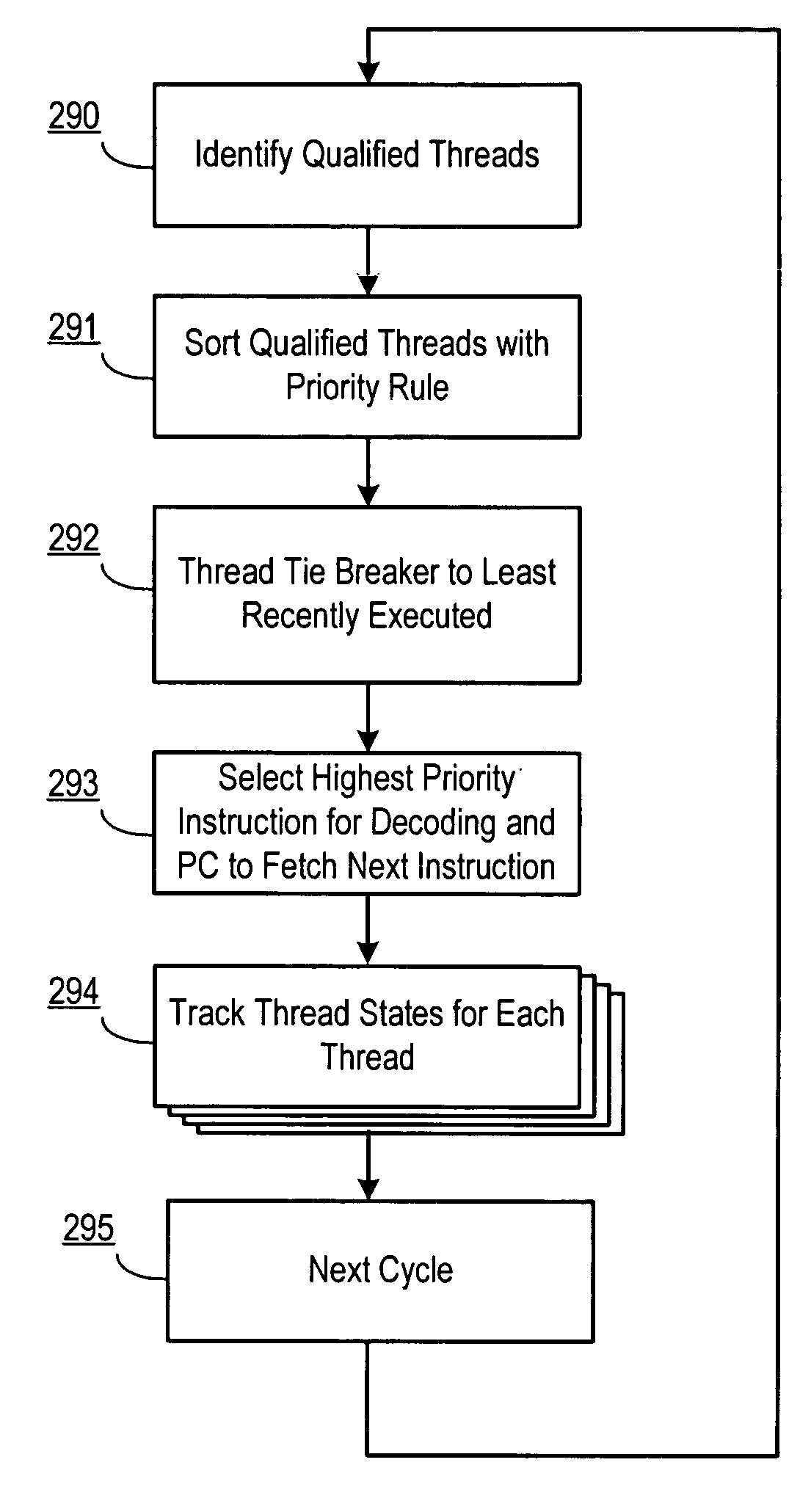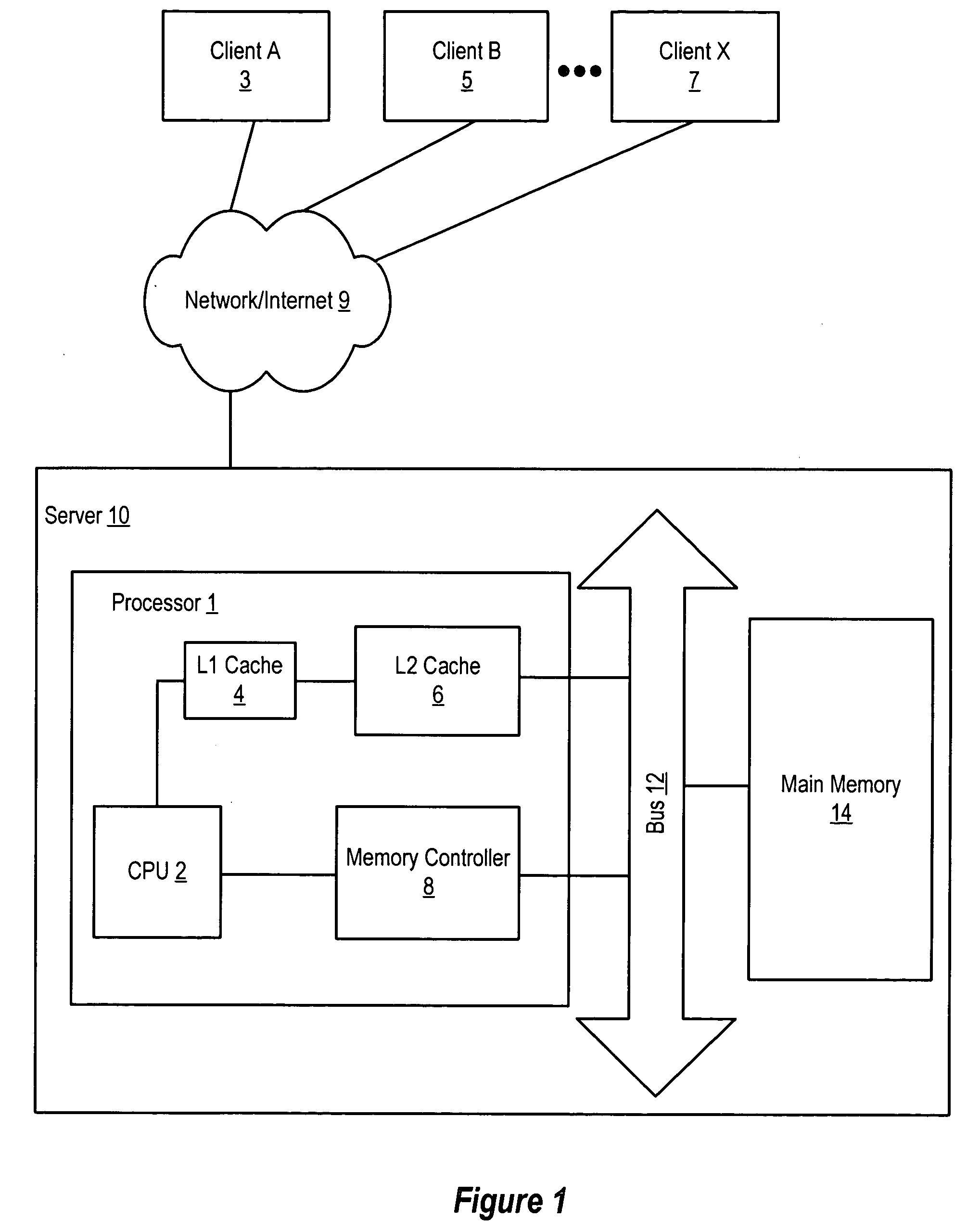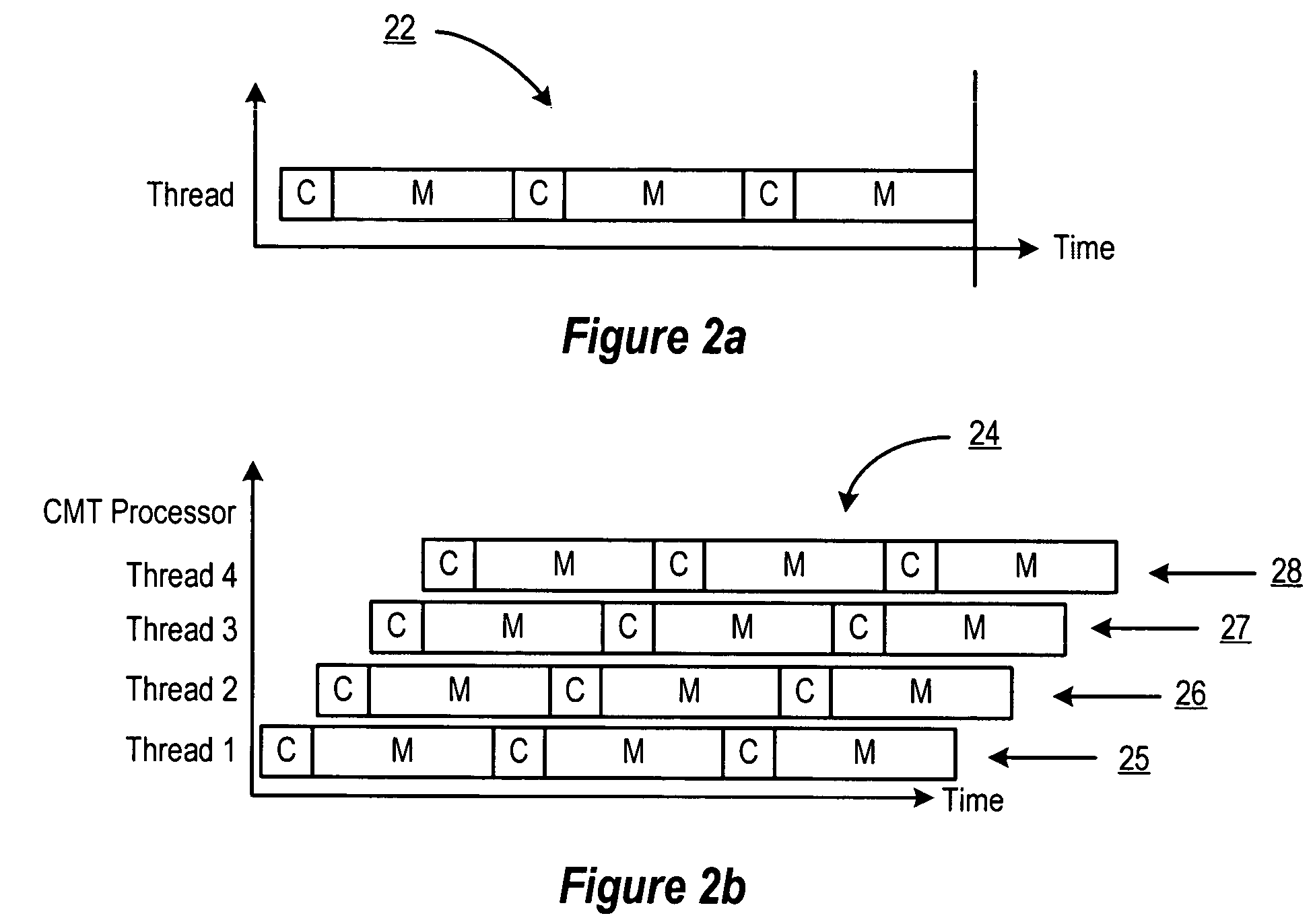Method and apparatus for scheduling multiple threads for execution in a shared microprocessor pipeline
a shared microprocessor and thread scheduling technology, applied in the direction of multi-programming arrangements, program control, instruments, etc., can solve the problems of stalling and idling, large percentage of time elapsed during pipeline stalling and idling, and the most detrimental stalling and idling, so as to improve the efficiency of multi-threaded processors and efficient and fair scheduling
- Summary
- Abstract
- Description
- Claims
- Application Information
AI Technical Summary
Benefits of technology
Problems solved by technology
Method used
Image
Examples
Embodiment Construction
[0022] As explained herein, when multiple threads are available for execution by a shared processor resource, the processor switches between available threads by giving priority to the least recently executed thread, taking into account active, speculative and suspended thread states. For purposes of providing an exemplary and not limiting description, it will be useful to describe the various aspects and embodiments of the invention herein in the context of a processor chip having multiple processor cores for executing multiple threads. However, the present invention may be used in connection with any multithreaded processor, including without limitation, any processor chip having one or more processor cores.
[0023] A selected embodiment of the present invention is shown in FIG. 3, which depicts a simplified schematic diagram of a processor chip 30 having multiple processor cores for processing multiple threads. In the illustrated embodiment, processor chip 30 includes a plurality ...
PUM
 Login to View More
Login to View More Abstract
Description
Claims
Application Information
 Login to View More
Login to View More - R&D
- Intellectual Property
- Life Sciences
- Materials
- Tech Scout
- Unparalleled Data Quality
- Higher Quality Content
- 60% Fewer Hallucinations
Browse by: Latest US Patents, China's latest patents, Technical Efficacy Thesaurus, Application Domain, Technology Topic, Popular Technical Reports.
© 2025 PatSnap. All rights reserved.Legal|Privacy policy|Modern Slavery Act Transparency Statement|Sitemap|About US| Contact US: help@patsnap.com



